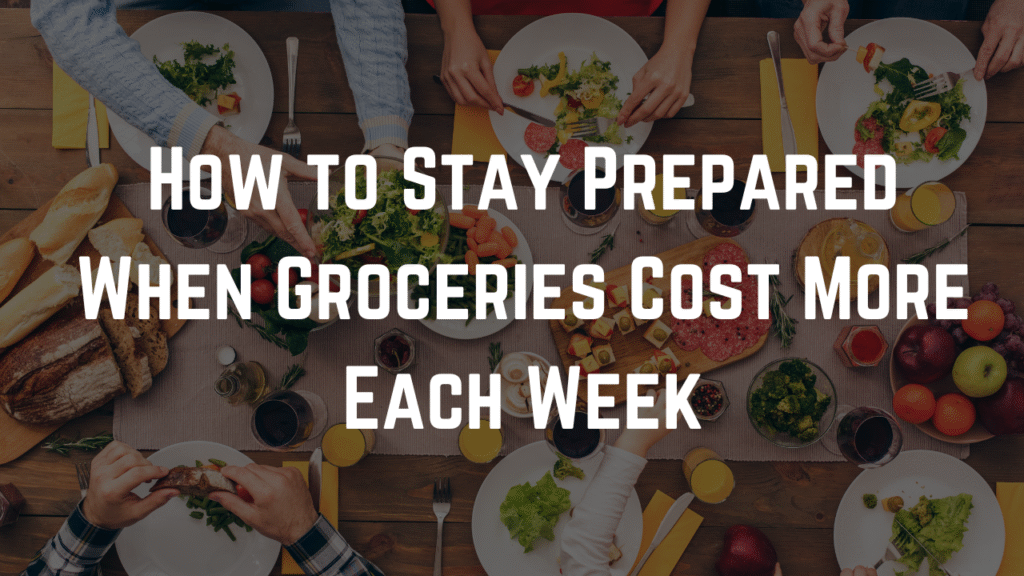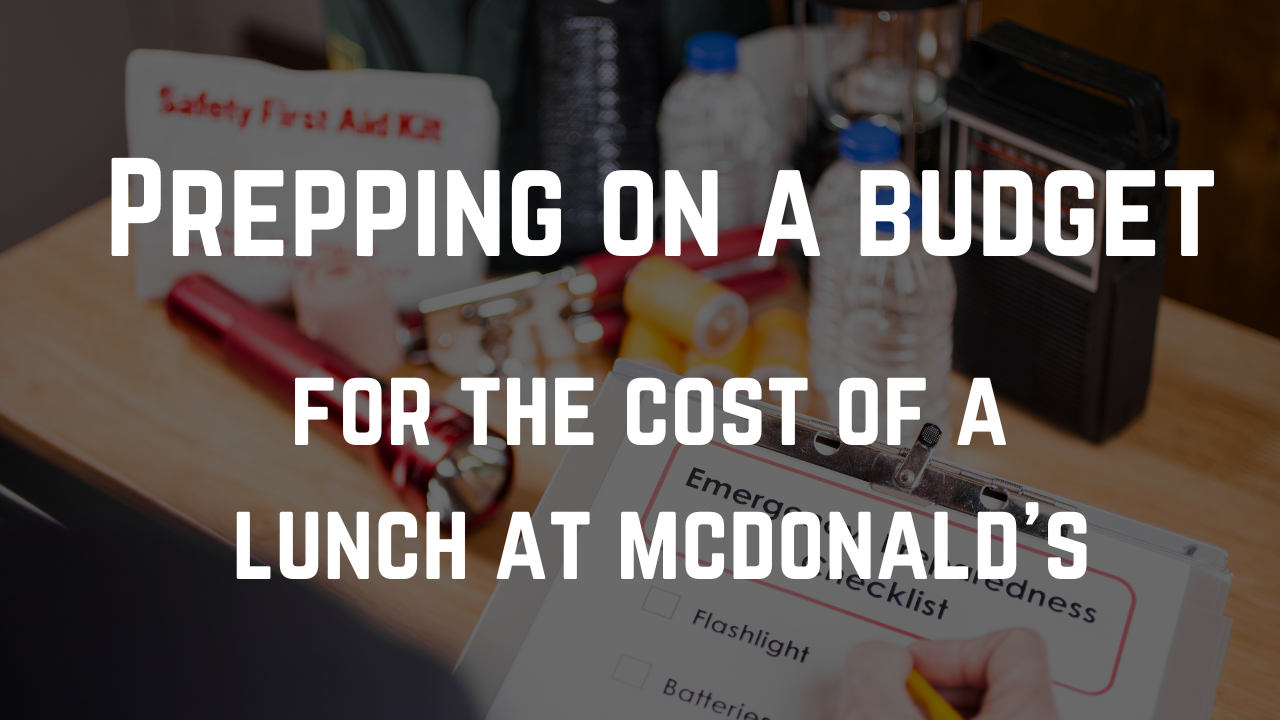
How to Stay Prepared When Groceries Cost More Each Week
When grocery budgets tighten or benefits like SNAP change, families often feel the pressure first at the dinner table. Rising costs, income shifts, and unexpected expenses can all affect food security, and it can feel like stability is out of reach.
Stocking up all at once is rarely realistic. The good news is that small, steady actions make a real difference. Preparedness grows over time through practical habits that fit your life and your budget.
Every family can build this kind of resilience one step at a time. Here are ways to meet current needs while gradually building a pantry that supports you through uncertain times.
Start With What You Already Have
Before spending anything, look closely at what is already in your home. Open every cabinet, fridge, and freezer, and write down what you find. Most families discover more than they expected once everything is visible.
Try this:
- Group items into categories such as grains, proteins, canned goods, and snacks.
- Highlight foods that can form the base for several meals, like rice, beans, pasta, or eggs.
- Move soon-to-expire items to the front or place them in a “use soon” basket.
Knowing what you have helps you plan smarter and prevents waste. This simple step often frees up room in the budget for small pantry additions later.
Add One Extra Item Each Trip
A reliable pantry can be built slowly and affordably. Each time you shop, add just one shelf-stable item to your cart. These small choices add up over time.
Affordable add-ons that stretch your meals:
- One bag of rice or beans
- A jar of peanut butter
- A can of tuna or chicken
- A box of pasta or oats
- A bag of frozen vegetables
Small, steady additions help you create a safety cushion without feeling the pressure to stock everything at once.
Plan Flexible Meals
Rigid meal plans can be hard to follow when prices change or stores run out of items. Instead, plan around simple meal “types.” Pick a few categories that work for your family, such as soup night, pasta night, or breakfast-for-dinner night.
Example:
- Grain base: Rice or pasta with any vegetable on sale
- Protein: Beans, eggs, or canned fish
- Flavor: Tomato sauce, broth, or simple seasonings
A flexible plan lets you adjust easily when prices rise or certain foods are unavailable.
Cook Once and Eat Twice
Buying in bulk can be expensive, but cooking efficiently saves both money and time. Make one base recipe that you can reuse in different ways during the week.
Example:
- Cook one pot of beans or lentils.
- Serve them over rice the first night.
- Use leftovers in tacos or wraps (don’t forget breakfast burritos the next morning by adding eggs!).
- Add the rest to soup or chili later in the week.
This approach reduces effort and helps ingredients go further.
Use Your Freezer as a Second Pantry
Freezers help you stretch your budget by preserving what you already bought. Even a small freezer can hold several budget-friendly meals.
Simple ways to use it:
- Freeze leftovers in single portions for quick meals.
- Store cooked grains, soups, or sauces for busy days.
- Freeze bread, cheese, or milk before they expire.
If space is limited, focus on high-impact items that save money and reduce waste.
Take Advantage of Local and Community Resources
Many families find extra support through local programs, social networks, and community groups that share food, knowledge, or small acts of help when times are tight.
Ways to connect with nearby resources:
- Join local Facebook or online groups that focus on neighborhood support, buy-nothing exchanges, or mutual-aid efforts. These communities often post updates about free food distributions, pantry openings, and shared resources.
- Check with schools, libraries, or community centers for information about weekend food programs, produce boxes, or local food drives.
- Reach out to local faith or civic groups. Many quietly offer grocery assistance or connect families to existing networks.
- Stay in touch with neighbors. Informal swaps of extra pantry items, garden produce, or shared meals often grow into reliable support systems.
Helpful national programs:
- Feeding America: Search their map of food banks to find one in your region.
- USDA National Hunger Hotline: Call 1-866-3-HUNGRY (1-866-348-6479) for guidance on local food assistance.
- AmpleHarvest.org: Connects community gardeners with nearby pantries that accept fresh produce.
When you connect with community resources, you widen your safety net. Each time you learn about a new program, pick up free produce, or share extra groceries with someone nearby, you stretch your household’s resilience a little further. These small actions build real security when money or supplies feel uncertain.
Rotate and Refresh Over Time
A growing pantry needs a little attention to stay reliable. When you regularly check what you already have, you are less likely to buy duplicates or forget items tucked behind others.
Simple ways to stay organized:
- Write purchase or “best by” dates on items with a marker.
- Move older foods to the front of shelves and place newer ones behind them.
- Set aside fifteen minutes once a month for a quick pantry check.
During that check, take note of what you have plenty of and what is running low. If you notice five bags of rice but no canned vegetables, adjust your next grocery list instead of buying more of the same thing. Rotation keeps your pantry balanced and prevents overspending on items you do not immediately need.
Over time, this habit helps you understand your household’s true food patterns, which makes future shopping trips more focused and less wasteful.
Build a Deep Pantry for Everyday and Emergencies
Instead of setting food aside and forgetting about it, think of your emergency supply as part of a deep pantry, an extra layer of essentials you already use. This approach keeps everything in rotation and prevents waste, while still ensuring you have enough on hand for a few unexpected days.
Storage tips for small spaces:
- Choose a cool, dry spot away from sunlight. Heat and light shorten the life of canned and packaged food.
- Use stackable bins or baskets under beds, inside closets, or on higher kitchen shelves to make use of unused space.
- Keep similar items together and label containers clearly. This makes it easier to see what you have and what needs to be replaced.
- Store food away from cleaning products or heaters to keep it safe and stable.
Good options for a compact deep pantry:
- Rice, beans, oats, or pasta for versatile meals
- Canned vegetables, soups, and fruits
- Shelf-stable milk, nut butters, and protein snacks
- Instant oatmeal, granola bars, or dried fruit for quick calories
- A small supply of bottled water or drinks
- A manual can opener and simple utensils
When you shop, replace what you’ve used rather than buying separate “emergency food.” This keeps your supplies fresh and ensures your pantry reflects what your household actually eats.
By viewing your deep pantry as part of everyday life, you stay ready for disruptions without storing food that goes stale or forgotten.
Focus on Progress, Not Perfection
Every small action makes a difference, whether that means adding one extra can to your pantry, cooking from what you already have, or learning a new way to stretch ingredients.
The goal is consistency. Some weeks you may only manage to restock one item, and that still matters. Over time, these choices create stability and confidence.
Food security doesn’t happen all at once. It grows through simple habits, awareness, and small adjustments that make life easier when challenges come.
Each meal you plan, each item you rotate, and each new resource you discover brings your household closer to steady ground. Keep going, stay curious, and build a pantry that quietly supports you when you need it most.


